How to Separate Front Yard from Neighbors | 17 DIY Steps
Articles, products, and services offered on this site are for informational purposes only. We are part of the Amazon Services LLC Associates Program, an affiliate advertising program. Amazon.com is compensated for sales resulting from links on our website.
Please review our disclaimer before acting based on anything you read or see.
We love our neighbors; sometimes, we want to establish a boundary between our front yard and theirs. There are several ways to achieve this separation, whether protecting our privacy or creating a more distinct and personalized landscape. However, it’s important to keep in mind that any changes to our property that affect the neighborhood’s visual appeal should do concerning local regulations and enhance the overall curb appeal of the community. Let’s see how to separate front yard from neighbors.
Creating a front yard that stands out and reflects our style is achievable and can be done attractively and respectfully:
- Assess Your Current Landscaping
- Create a Plan for Your Front Yard
- Choose a Fence for Privacy
- Plant Trees and Shrubs for Separation
- Use borders and edging
- Build a custom fence
- Incorporate a garden wall
- Place a trellis or an arbor
- Take advantage of natural barriers
- Utilize outdoor lighting for added privacy
- Install Outdoor Lighting
- Add Colorful Accents
- Install Structures for Privacy
- Consider Wind and Noise Barriers
- Utilize Raised Beds
- Plant a Garden to Enhance Privacy
- Speak to Your Neighbors
Many design solutions exist, from installing a fence or hedge to incorporating decorative elements like ornamental grasses or rock borders.
Working with our neighbors can also create a collaborative and mutually satisfying design that considers both parties’ needs.
How To Separate Front Yard from Neighbors
1. Assess Your Current Landscaping
One of the first steps in separating your front yard from your neighbors is to assess your current landscaping. Look at your yard from your neighbor’s perspective to determine which areas might be visible and where you could increase privacy.

It will help you to determine where to focus your efforts when implementing landscaping changes. Consider adding hedges, plants, or trees to create a natural barrier. If you prefer a more decorative approach, you can add fencing or a decorative wall to create a transition between your yard and the neighboring property.
Remember that hardscaping additions may require approval from your local zoning board, so check your local regulations before making any major changes.
2. Create a Plan for Your Front Yard

Creating a plan for your front yard is an important step towards adding privacy and defining boundaries between your property and your neighbors.
A well-designed front yard can enhance your home’s beauty and increase your property’s overall value.
When separating your front yard from your neighbors, it’s important to consider several factors, such as zoning laws, neighborhood regulations, and personal preferences.
One way to create separation is by installing boundary markers such as a fence or hedge.
However, before undertaking any major changes, it is important to discuss your plans with your neighbors to ensure that it aligns with their preferences as well.
A comprehensive plan will help you achieve the desired level of privacy and add an aesthetic appeal to your front yard.
3. Choose a Fence for Privacy
If you’re looking for ways to enhance the privacy of your front yard, installing a fence can be a wise decision. However, selecting the right type of fence to create separation from the neighbors may take a lot of work.
A privacy fence is a popular choice that offers an effective way to conceal your yard from prying eyes.
This type of fence comes in various materials, such as wood, vinyl, metal, and composite. Before choosing your fence, consider your aesthetics, cost, and upkeep preferences.
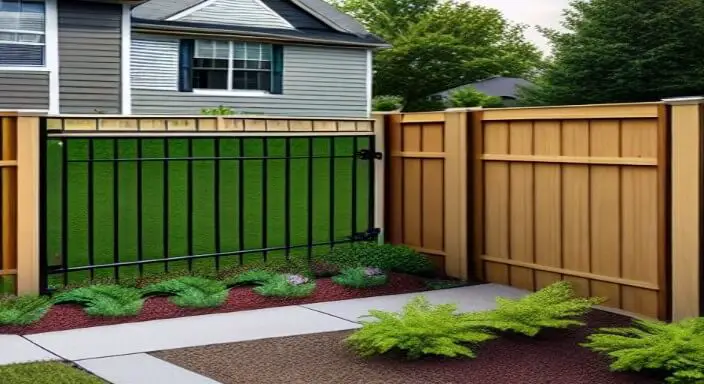
For instance, a wood fence can provide a more natural look, but it might require regular maintenance, while a vinyl fence can offer the same level of privacy without needing maintenance but at a higher cost.
Ultimately, a well-chosen fence can provide you with the desired level of privacy while boosting the value of your property.
4. Plant Trees and Shrubs for Separation
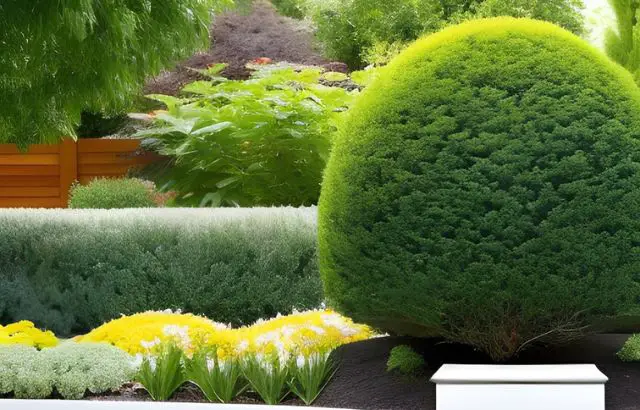
Planting trees and shrubs can create separation between your front and neighbors’ yards. This natural barrier provides privacy and enhances the aesthetic appeal of your landscaping. When selecting trees and shrubs for separation, consider the size and growth rate of the plants, as well as their maintenance requirements.
Trees that grow too tall too quickly can obstruct views and create maintenance issues. On the other hand, slow-growing shrubs may take years to create a visible separation. It’s also important to choose plants that are suitable for your climate and soil type.
Proper selection and care allow you to create a beautiful natural barrier for separation and privacy in your front yard.
5. Use borders and edging
Using borders and edging can be a simple yet effective solution when creating privacy and separating your front yard from your neighbor.
One option is to install a fence or hedge along the property line, which can be expensive and not be allowed in some areas. Instead, use landscaping elements such as decorative stones, pavers, or low-growing plants to create a clear boundary.

These elements serve the purpose of separation and add visual interest to your front yard. Additionally, adding raised planters or a sitting bench near the border can enhance the separation while creating a functional and inviting outdoor space.
Remember any local regulations regarding height restrictions or required setbacks when choosing and placing your borders and edging.
6. Build a custom fence
Building a custom fence to separate your front yard from your neighbors can add privacy, security, and curb appeal to your property. A unique fence design can contribute to your home’s style and increase its value.
To begin building your custom fence, consult with your local zoning authority to obtain the necessary permits and ensure you follow any specific building codes.
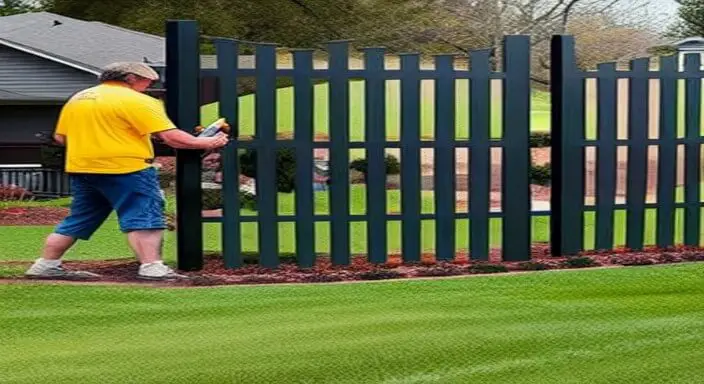
Consider your fence’s desired height, style, and materials. Popular materials for custom fencing include wood, vinyl, metal, and composite materials.
Depending on your style and design, you can create a fence that adds a touch of elegance or a more rustic charm.
Ensure you analyze your property lines and clearly understand your property boundaries to avoid disputes with your neighbors.
With careful planning and attention to detail, building a custom fence can make your front yard stand out positively.
7. Incorporate a garden wall
If you want to create a bit of privacy for your front yard, one solution is to incorporate a garden wall. Building a wall allows you to visually separate your space from your neighbors while adding an attractive feature to your yard.
Before starting this project, check with your local council to see if any regulations or permits are required. Once you have the go-ahead, you can start sourcing materials and designing the wall.
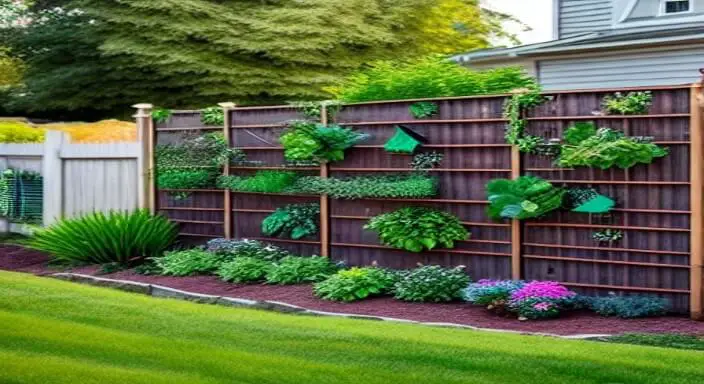
There are many options, including brick, concrete, and natural stone. Consider the style and color of your house and surroundings when selecting materials, and hire professional help to ensure your wall is sturdy and secure.
With a garden wall, you can create a private, enclosed space perfect for relaxing and entertaining.
8. Place a trellis or an arbor
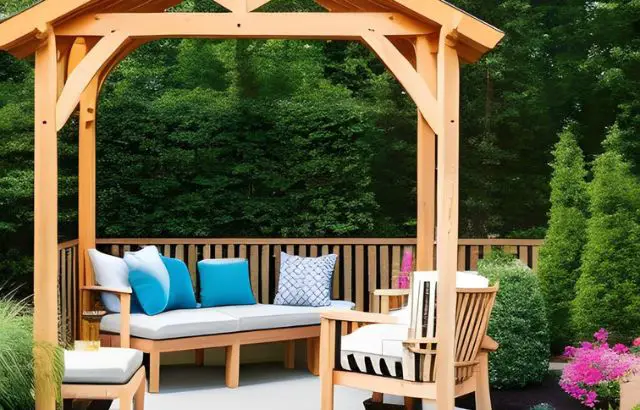
A trellis or an arbor can be a great option when making your front yard more private. These structures provide separation from neighbors and add aesthetic value to your yard. A trellis is a lattice-like structure made of wood or metal typically used to support climbing plants like ivy or roses.
It can place directly in the ground or freestanding, as a barrier from the street or between properties. An arbor is similar to a trellis but features a wider, more powerful framework that often has an archway.
It’s ideal for adding a focal point to your yard or creating an entrance. Both structures are excellent options to add some separation between your front yard and your neighbor’s property, helping you create a private oasis.
However, you must check with local authorities and homeowner associations to ensure you comply with building codes or regulations.
9. Take advantage of natural barriers
Natural barriers can provide an attractive and effective solution for privacy in your front yard.
Trees, shrubs, and other plants can strategically place along property lines to create a sense of separation and privacy from neighbors without fencing or other artificial structures.
Natural barriers can enhance the overall aesthetic of your front yard while also providing environmental benefits such as reducing noise and improving air quality.
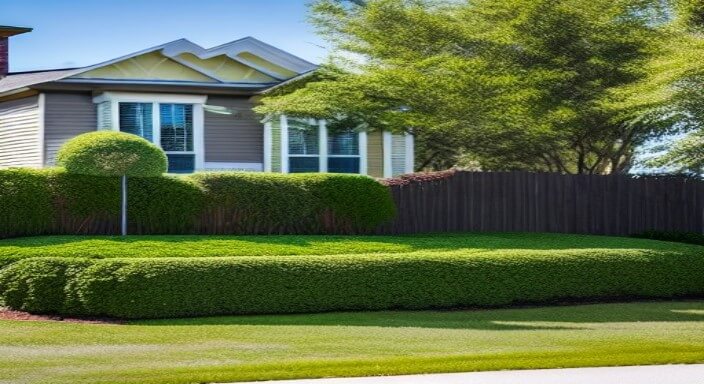
When choosing plants for natural barriers, consider their height, width, growth rate, and maintenance requirements to ensure they meet your privacy and landscaping needs. The local climate, sunlight, and soil conditions also affect plant selection.
Creating a natural barrier requires patience, but the result can be an attractive, low-maintenance solution to separate your front yard from your neighbors.
10. Utilize outdoor lighting for added privacy
Before creating more privacy in your front yard, outdoor lighting can be an effective and attractive solution. Outdoor lighting, including increased security, safety, ambiance, and aesthetics, can benefit your space.
You can create a barrier between your front and neighbor yards by strategically placing lighting fixtures. You add physical barriers that could distract from your space’s overall look and feel.
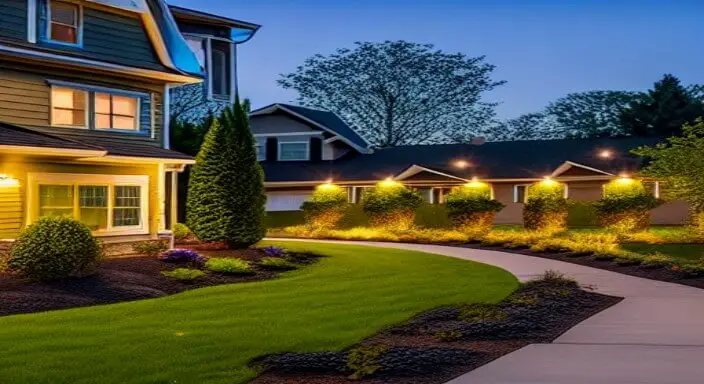
This approach can be particularly helpful if you want to separate your outdoor living areas or create a more intimate space for entertaining guests.
Be sure to choose lighting fixtures appropriate for your climate and fit your property’s overall theme and style. With some planning and thoughtful design, you can create a beautiful and private front yard that enhances the value and appeal of your home.
11. Install Outdoor Lighting
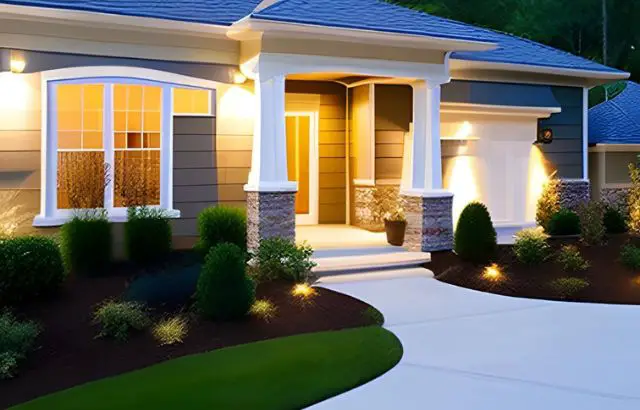
Installing outdoor lighting can create clear boundaries between your front yard and neighbors. Not only will it enhance the aesthetic appeal of your property, but it can also provide added security and safety by illuminating dark areas around your home.
Numerous lighting options are available, including solar-powered or low-voltage LED lights, which are both energy-efficient and affordable.
You can also choose from various designs, such as wall-mounted or ground-level fixtures, to create the desired effect.
By installing outdoor lighting, you can create a welcoming atmosphere while establishing clear boundaries and adding value to your property.
12. Add Colorful Accents
Adding colorful accents to your front yard can be a fantastic way to separate your property from your neighbors and create a stunning, eye-catching display.
By incorporating bold, vibrant colors into your landscaping, you can draw attention to key features of your yard, such as flower beds, trees, or hedges. Consider using brightly colored planters, garden ornaments, or outdoor artwork to create focal points and add depth and interest to your space.
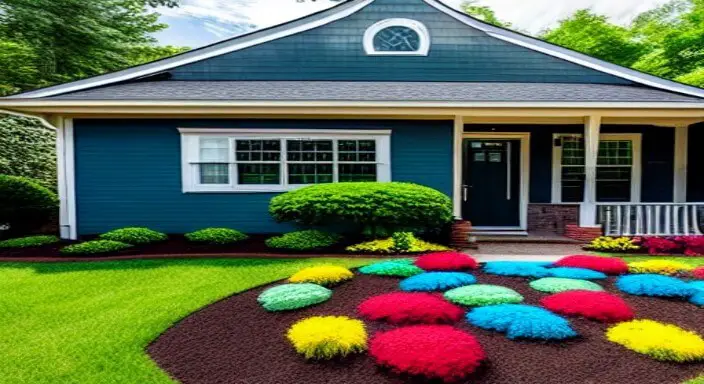
Additionally, contrasting colors can help define borders and boundaries, creating a clear separation between your yard and your neighbors’.
Creativity and planning allow you to transform your front yard into a unique and visually striking space.
13. Install Structures for Privacy
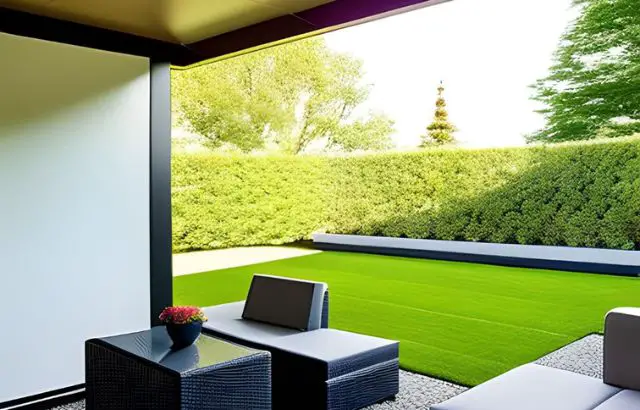
When creating a private space in your front yard, installing structures for privacy is an effective solution. This method can help you to separate your property from your neighbors, giving you the peace and privacy you desire. There are several options available to choose from, including fences, walls, hedges, and screens.
Each structure has advantages and disadvantages, so it’s important to consider your needs and preferences before deciding.
A well-designed privacy structure enhances the aesthetic appeal of your yard and adds value to your property.
Whether you’re looking to create a secluded outdoor living space or keep prying your eyes away, installing structures for privacy is a smart investment.
14. Consider Wind and Noise Barriers
When designing a front yard, it is important to consider the impact of wind and noise from neighboring properties. Wind barriers, such as fences or hedges, can help to reduce the effects of strong gusts and provide a more comfortable outdoor environment.

Similarly, noise barriers can be useful in reducing sound pollution from nearby roads or noisy neighbors.
These barriers can be soundproof walls, landscaping features, or water features that create soothing background noise.
When planning your front yard, it is important to consider your area’s specific wind and noise conditions and design accordingly to create a peaceful and enjoyable outdoor space.
15. Utilize Raised Beds
Raised beds are an excellent way to create a beautiful, functional landscaping feature that bridges your front yard and neighbors.
You can create a defined border that adds depth and dimension to your front yard by elevating your plants and vegetables above ground level.

Raised beds also offer several benefits, including improved drainage, better soil quality, and better accessibility for planting, watering, and harvesting.
They are easy to build and come in various materials, such as wood, metal, and plastic.
Utilizing raised beds to separate your front yard from your neighbors is an excellent way to add privacy, beauty, and functionality to your outdoor space.
16. Plant a Garden to Enhance Privacy
Planting a garden to enhance privacy and separate your front yard from your neighbors is a great landscaping idea that can add beauty and function to your property.
Using a combination of tall hedges, shrubs, and trees, you can create a natural-looking barrier that shields your outdoor space from prying eyes, reduces noise pollution, and increases your property value.
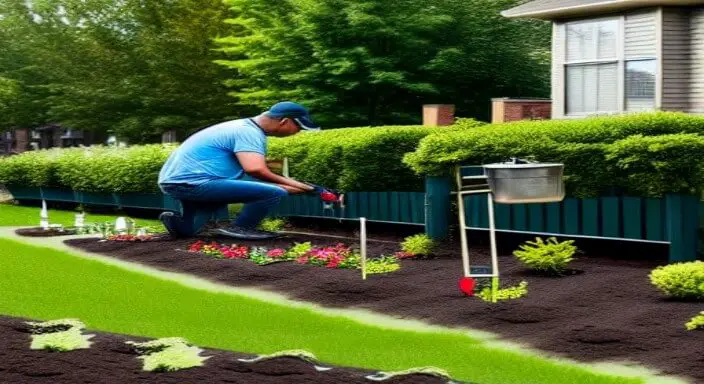
When selecting plants for your private garden, it is important to consider their growth habits, maintenance requirements, and compatibility with your local climate and soil conditions. With careful planning and regular upkeep, a well-designed privacy garden can provide the seclusion and tranquility you need to enjoy your outdoor living space fully.
17. Speak to Your Neighbors

Talking to them is the first step in separating your front yard from your neighbors’. It’s important to approach the conversation with a professional and respectful tone.
Start by expressing your desire to add a clear boundary between your properties for privacy and aesthetic appeal. Listen to your neighbors’ concerns and find a solution for both parties.
It could include installing a fence or planting a row of trees or bushes. Building a positive relationship with your neighbors through open communication can help create a harmonious living environment.
Expert Opinion
You can achieve this in several ways, depending on your preferences, budget, and the level of privacy you desire.
From traditional privacy fences and hedges to decorative plants and creative landscaping designs, there are many options to choose from.
However, it’s important to communicate with your neighbors and consider their needs and views, as well as local regulations and zoning laws, before implementing any changes.
With thoughtful planning and effort, you can create a beautiful and functional front yard that enhances your property value, privacy, and curb appeal for years.



Comments are closed.